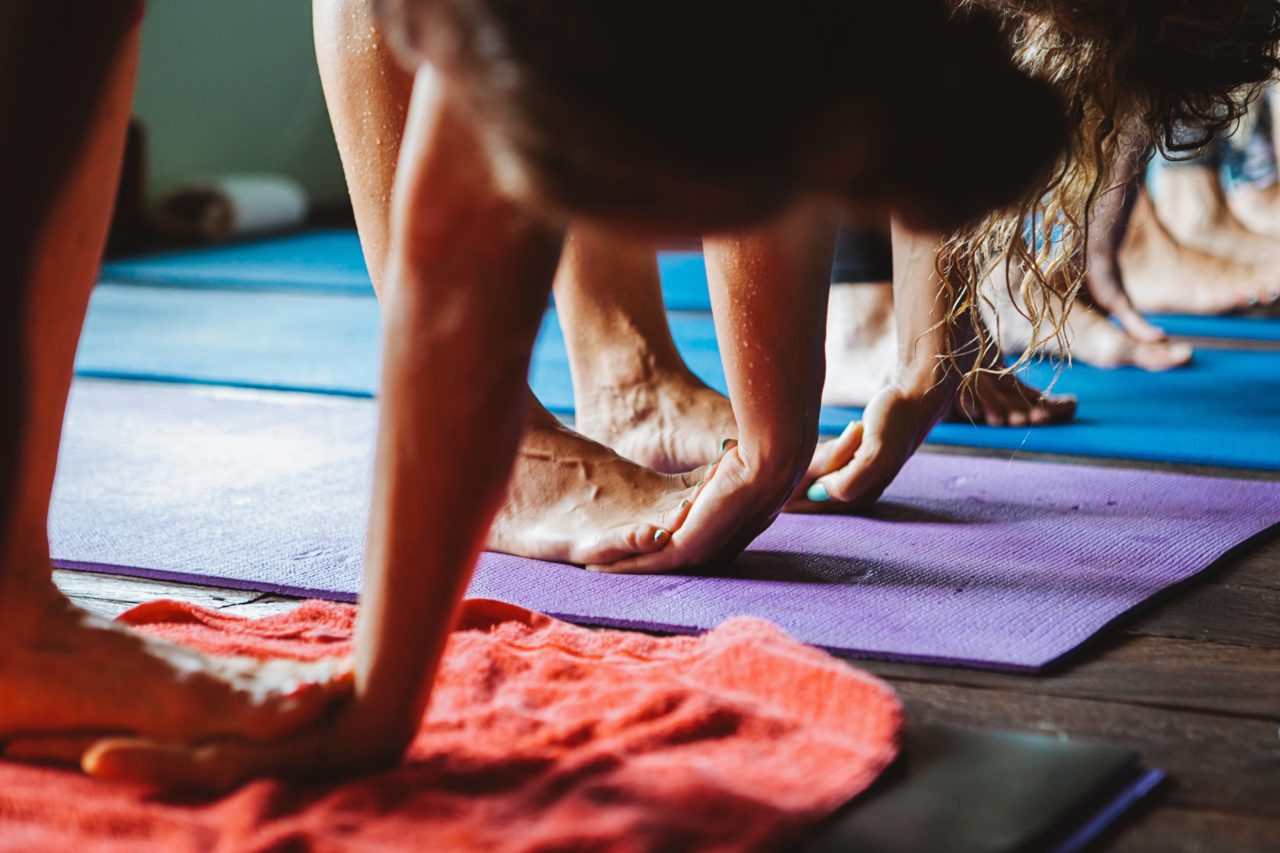As a yoga teacher, I have seen all sorts of things over the years. What seems like common sense to some is anathema to others and there are many things that are not so obvious if you’re used to going to group exercise classes. The philosophy behind the practice teaches us to live a better life outside the studio, so cultivating these qualities in class will help us way beyond our physical practice or asana.
1) Turn up early to your class
Whether it’s your first time or your 500th, arrive at your class a few minutes early. As a beginner, it is vital for your teacher to touch base with you first, to find out if you’re injured/pregnant or anything else he or she needs to know before you start. Getting there early allows you to properly “arrive” and release whatever you’ve come from. Taking time to just sit or lie and relax your mind and body allows you to get more out of your class.
2) Practice silence in the space
Yoga isn’t like a regular group exercise class. It’s a place where we are encouraged to turn inwards, not outwards, so starting from the time you get on on your mat, practice silence, for your own sake and for those around you.
3) No shoes, ever
It should be quite obvious in most studios that there are no shoes allowed in the yoga shala/space, but even so, be aware that shoes are a no-no. Then, even when you have removed your shoes, don’t walk on other people’s mats. This is a sacred space, on which bodies will be moving around, and they should be kept free from strange feet. You wouldn’t step on someone’s bed so don’t step on their mat.
4) Respect personal space
When class is busy, be considerate to those around you. If you’re doing a sun salutation, for example, bring your arms forward and up instead of out to the side and up, so as not to skim the cheeks of the practitioner beside you. Stagger your mat or your body to accommodate those around you. One of the elements of the philosophy is “aparigraha,” meaning non-greediness, and this is how we can practice it on our mats.
5) Respect the teacher’s sequencing
While modifying your practice due to injury or physical limitation is acceptable, going rogue is a big no-no. Just because you feel like doing some crunches instead of savasana, or you feel like throwing a headstand when it’s time to start winding down into your twists, don’t. Your teacher has planned a class for a reason, so go with it. Sometimes just letting go of your “desires” to do a particular pose is indeed the yoga itself. If you feel it’s “too easy,” maybe today it’s time to pull back and really dial into the basics, the poses we take for granted. If you “don’t like” something or “it’s too hard,” then there are lessons in there too. Try the new things, push through the resistance, as it’s in there that we will really grow beyond just executing poses.
6) Cleanliness is key
One of the tenets of the yoga philosophy is cleanliness, known as “saucha,” inside and out. It may seem obvious but some people suffer from body odor more than others. If that’s the case with you, shower before class. It’s really unpleasant for people to do ujayyi breathing while inhaling someone else’s lack of hygiene.
7) Leave your ego at the door
Yoga is really meant to be a “work in” rather than a workout. Let go of the need to impress your classmates, keep up and compete. This is a tough one for those who are career climbers, ambitious and competitive by nature. That’s great outside the studio, but not inside. Instead, use that discipline (known as “tapas” in the philosophy) to keep showing up and practicing, but be OK with being a beginner. Understand that things take time, consistency and practice. Yoga is a space where you can just be whatever you are. Every day is different, so on some days you’ll feel stronger than others, more flexible than others. And some days you’ll be counting down the seconds for the next child’s pose or savasana.
8) We don’t need to hear you breathing
Your breathing or “ujayyi” breath should sound a little more Princess Leah than Darth Vader. Don’t expend more energy than is necessary with over-breathing, as this actually becomes hyper-ventilation
9) Turn off your phone
Your phone is a massive distraction so don’t keep it by your mat. You have 24 hours in a day and your yoga practice should be one to one-and-a-half hours with no disturbance. We are so attached to these devices that many people need to keep them close by, no matter what they are doing. Turn it off and keep it out of your eyesight completely. Even if you have it on silent, that vibration can still be heard across the room. Not only does your phone disturb you and your practice, it disturbs those around you. The philosophy talks about “asteya,” which translates as non-stealing, so don’t steal your or your classmates’ precious time with your phone.
10) Don’t skip savasana
In today’s busy world, everyone is in a hurry. I explain to my students that to skip savasana is like shaking up a can of fizzy drink and opening it before you let the bubbles settle down. Let your mind and body relax for a few minutes. Have the discipline to be still, because this discipline we practice in the studio will eventually serve us outside our practice too.
• This article was originally published in 2020

